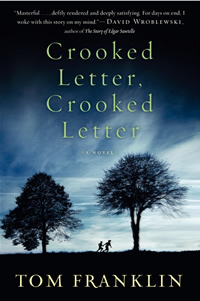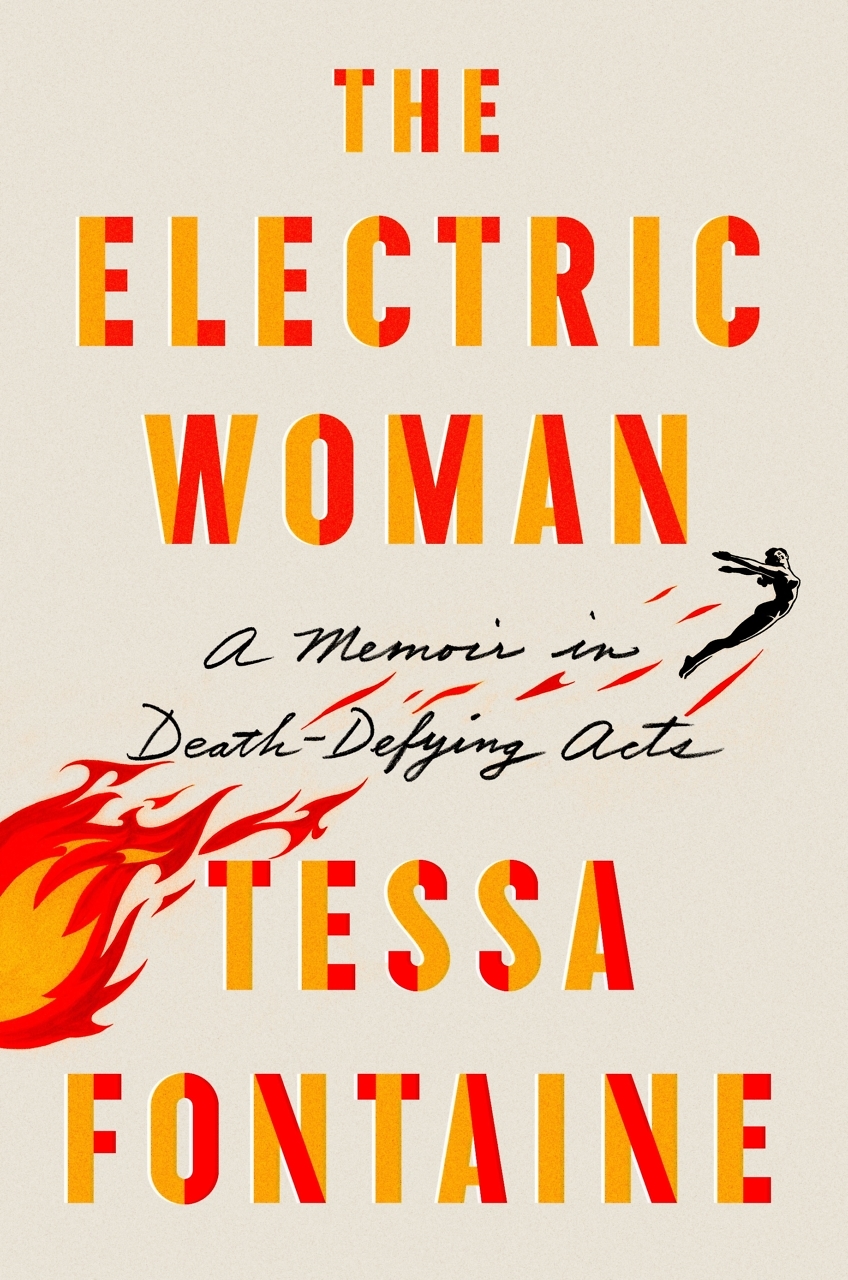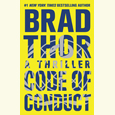The Old Grief of Blood
Tom Franklin’s new whodunit is a searing meditation on the nature of friendship and loss
Tom Franklin’s debut story collection Poachers (2000) begins with “Hunting Years,” a short introduction to the book that serves as an elegant statement of purpose. Returning to the woods near his childhood home in Dickinson, Alabama, to verify setting details for a new story, Franklin confesses that “coming back like this to hunt for details for my stories feels a bit like poaching on land that used to be mine. But I’ve never lost the need to tell of my Alabama, to reveal it, lush and green and full of death. So I return, knowing what I’ve learned. I come back, where life is slow dying, and I poach for stories. I poach because I want to recover the paths while there’s still time, before the last logging trucks rumble through and the old, dark ways are at last forever hewn.”
The stories that follow, along with Franklin’s subsequent novels—especially the acclaimed Hell at the Breech (2003), a suspenseful and frequently grisly historical novel that earned Franklin flattering comparisons to Cormac McCarthy, his most obvious influence—all hold true to this raison d’être. Franklin’s urgent, obsessive eye draws again and again from the verdant forests of the deep South, which, in his neo-Biblical, metaphysical vision, are both primal Eden and the “dark wood” at the edge of the abyss.
 In Franklin’s latest novel, Crooked Letter, Crooked Letter, the setting has shifted from Alabama to Mississippi. (The novel’s title is derived from an old method for teaching elementary school students how to spell the name of their home state.) But the simultaneously paradisiacal, perilous forests are the same, and they form the thematic center of a compelling literary thriller that skillfully blends the conventions of crime fiction with sensitive examinations of Faulkner Country’s inescapable concerns: race, love, family secrets, and the twin demons of longing and regret.
In Franklin’s latest novel, Crooked Letter, Crooked Letter, the setting has shifted from Alabama to Mississippi. (The novel’s title is derived from an old method for teaching elementary school students how to spell the name of their home state.) But the simultaneously paradisiacal, perilous forests are the same, and they form the thematic center of a compelling literary thriller that skillfully blends the conventions of crime fiction with sensitive examinations of Faulkner Country’s inescapable concerns: race, love, family secrets, and the twin demons of longing and regret.
Franklin builds his plot around that most titillating, enduring, and terrifying of gothic nightmares: the disappearance and presumed abduction and murder of a teenaged girl. Crooked Letter, Crooked Letter provides not one, but two victims: the first, a fast girl from the wrong side of the tracks, has been missing and presumed dead for over twenty years; the second, a college student and the daughter of a wealthy timber baron, has recently vanished. The rural communities of Gerald County, Mississippi, have long been haunted by the vanishing of Cindy Walker. When Tina Rutherford goes missing, too, suspicion naturally falls upon “Scary” Larry Ott, the peculiar, bookish son of a local mechanic.
The last person to see Cindy alive, Larry has grown into a reclusive local bogeyman, ostracized under the shadow of his presumed guilt. In the days after Tina’s disappearance, Larry reaches out to an old childhood friend, Silas “32” Jones, a local sports hero who left Gerald County to play baseball at Ole Miss and has recently returned to Mississippi to become the constable for the town of Chabot, population 500. The reappearance of Larry Ott triggers a flood of conflicted memories in Silas, and the alternately sentimental and cruel history of their long-abandoned friendship becomes inextricably intertwined with the unknown fates of the missing girls.
 Larry Ott, a fanatic reader of horror fiction—especially Stephen King, whose collection Different Seasons becomes one of a series of recurring symbolic talismans and images in Crooked Letter, Crooked Letter—wonders as a child whether Silas Jones might be his doppelganger. Indeed, Larry and Silas are both equals and opposites. Larry is white, the product of a typical lower-middle-class nuclear family; Silas is black, and the child of a single mother so desperately poor that she must hock her belongings to pay for travel from Chicago back home to Mississippi, where she and Silas squat in a cabin with no running water or electricity on a remote patch of Larry’s father’s land. Larry’s awkwardness and introspection stand in stark contrast to Silas’s effortless athleticism and courage. Alone in Franklin’s lush, dark, Southern woods, they discover and befriend each other, only to be driven apart by a shocking, archetypal instance of violence that edges dangerously close to melodrama. When next they meet again in high school, the natural lines between black and white, jock and nerd, preclude any sort of reconciliation.
Larry Ott, a fanatic reader of horror fiction—especially Stephen King, whose collection Different Seasons becomes one of a series of recurring symbolic talismans and images in Crooked Letter, Crooked Letter—wonders as a child whether Silas Jones might be his doppelganger. Indeed, Larry and Silas are both equals and opposites. Larry is white, the product of a typical lower-middle-class nuclear family; Silas is black, and the child of a single mother so desperately poor that she must hock her belongings to pay for travel from Chicago back home to Mississippi, where she and Silas squat in a cabin with no running water or electricity on a remote patch of Larry’s father’s land. Larry’s awkwardness and introspection stand in stark contrast to Silas’s effortless athleticism and courage. Alone in Franklin’s lush, dark, Southern woods, they discover and befriend each other, only to be driven apart by a shocking, archetypal instance of violence that edges dangerously close to melodrama. When next they meet again in high school, the natural lines between black and white, jock and nerd, preclude any sort of reconciliation.
As he closes in on the truth about Larry and the missing girls, Silas reflects on a night years before when, after being invited to participate in a high-school Halloween haunted house, Larry Ott was left standing alone in a parking lot. Silas remembers looking off from where his friends were congregated to notice Larry gazing back at him. The awkward boy who had once been his friend was waiting for an invitation to be included, but Silas ignored him, later joining the other kids in ridiculing him. Years later, with the guilt of their shared past bearing down upon him, Silas wonders: “How different would their worlds have been if he’d followed Larry across the road toward his mother’s Buick way back when, that long-ago haunted house? What if he’d just reached out and took Larry’s shoulder, said, ‘Wait’?” With the question of how these seemingly insignificant choices can forever alter a life, Tom Franklin masterfully fuses the elements of a compelling whodunit with a searing, frequently heartbreaking meditation on the nature of friendship and the ways in which events both large and small can shape the future.
A gifted stylist whose early work earned him the admiration and advocacy of luminaries like Philip Roth and Richard Ford, Tom Franklin continues to refine his distinct voice in Crooked Letter, Crooked Letter. His effortlessly readable prose combines lyrical sentences that casually and subtly integrate rural vernacular with rich, fresh images of rural Southern landscapes and character studies so that Gerald County and Silas and Larry come to life in both content and form. Though certain elements of the plot either stretch credulity or sound their significance too loudly, the novel’s propulsive pacing and the meticulous structure of the past and present action keep the story immediate and compelling. Franklin does not shy away from violence or cruelty, but he unflinchingly manages the more gruesome and brutal elements with a measured hand that never edges into gratuitousness.
Though Crooked Letter, Crooked Letter aptly does the work of any good suspense novel, its chief pleasures lie in Tom Franklin’s persistently inventive representation of seemingly exhausted landscapes, and in his patient, nuanced depiction of Silas Jones and Larry Ott, whose unlikely friendship he makes both believable and deeply affecting. Franklin’s characters’ ruminations clearly gesture toward the paradigmatic conflicts—what Faulkner called “the old grief of blood”—always in or near the shadow of that same dark wood, “lush and green and full of death.” But, despite the darkness of the forests they inhabit, Franklin’s characters still find within them a source of something ancient and worthy of being reclaimed.
[This review originally appeared on October 7, 2010.]
Tom Franklin will discuss Crooked Letter, Crooked Letter at the twenty-fourth annual Southern Festival of Books, held October 12-14 at Legislative Plaza in Nashville. All events are free and open to the public.


